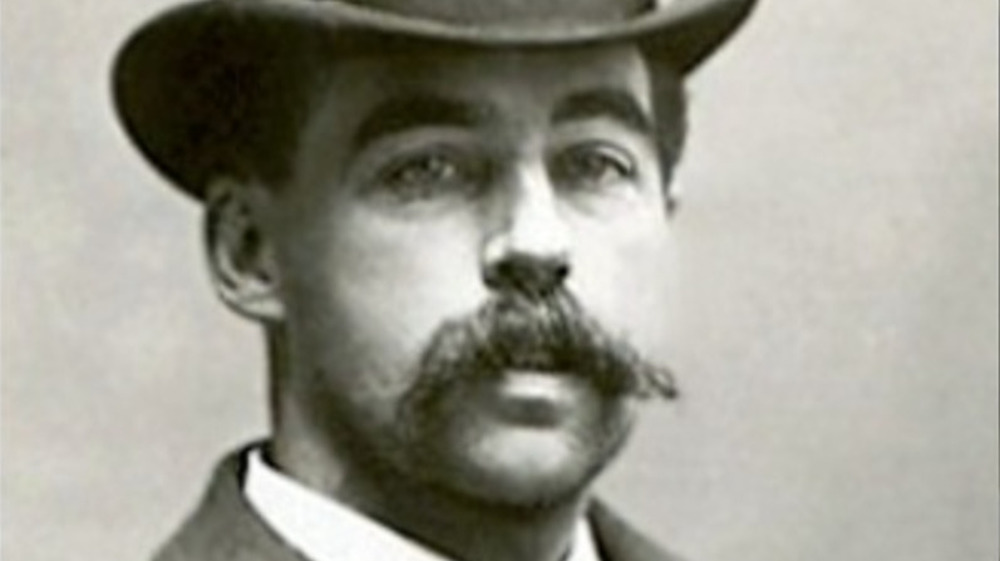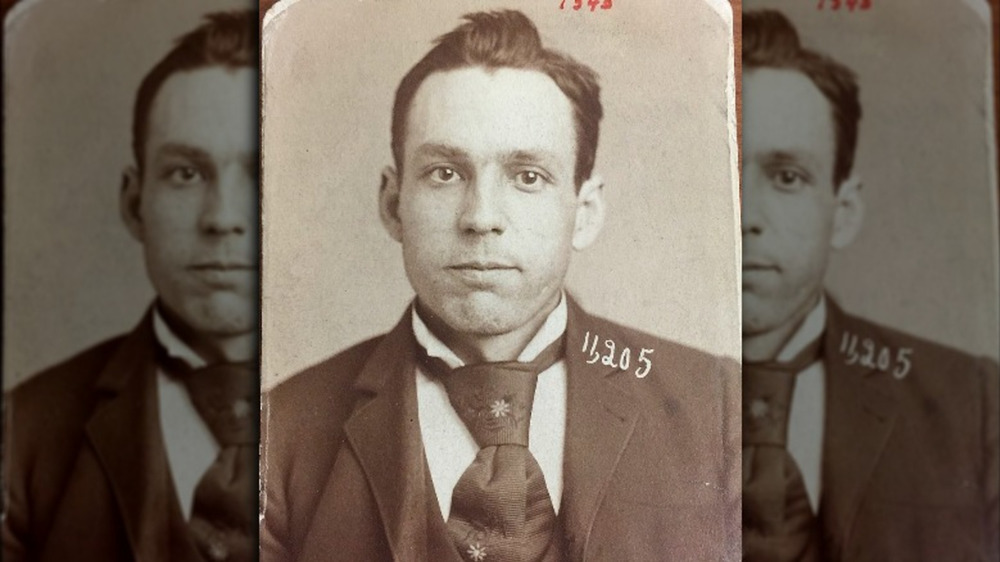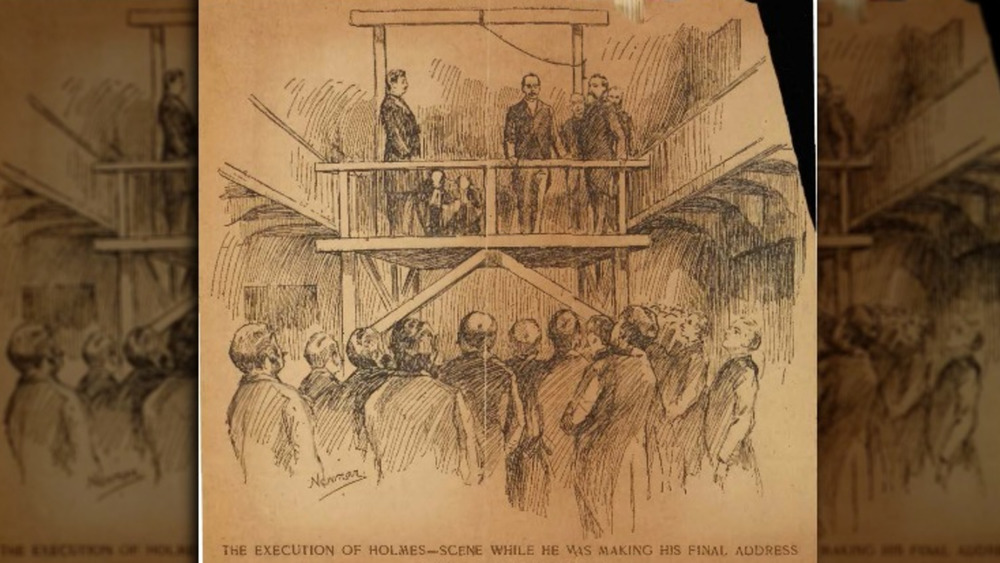The Surprising Way H.H. Holmes Was Brought To Justice
Widely considered to be America's first serial killer, H.H. Holmes blamed "the devil in me" for his lifelong urge to kill people. In the late 1880s, he moved to Chicago, Illinois, and began building his infamous "murder castle," where he lured and trapped his many unwitting victims. To make money, he also ran criminal schemes on the side. One of his scams involved burning his own house down to collect the insurance money in 1893, which caused police to become suspicious. Holmes was arrested for insurance fraud, but he was released after only a short time, per Britannica.
With the heat building in Chicago, Holmes decided to relocate to Fort Worth, Texas, in 1894, where he immediately set to work constructing another murder castle. However, his work was cut short when he was picked up on the charge of selling mortgaged goods and briefly jailed. Although his stint in the clink only lasted a short time, it turned out to be a very fateful stay. While behind bars, he met the famous Wild West outlaw known as the Handsome Bandit.
The Handsome Bandit told police about Holmes' insurance scam
The Handsome Bandit, whose real name was Marion Hedgepeth, agreed to help Holmes commit insurance fraud. Holmes had devised a plan to defraud an insurance company by faking his own death, and then collecting on his own $10,000 insurance policy. He promised Hedgepeth $500 of the money if he could recommend a good, trustworthy lawyer to help pull off the scheme, according to the Crime Museum.
Hedgepeth recommended a St. Louis-based lawyer named Jeptha Howe. Howe was on board with the plan, but the scheme ultimately failed when the insurance company became suspicious and denied his claim, after which Holmes promptly left Texas. Undeterred, Holmes moved to Philadelphia and attempted the same scheme again, with a different accomplice named Ben Pitezel. Only this time, Pitezel, not Holmes, would be the one to fake his own death. Then, to ensure the insurance company would definitely pay out on the policy, Holmes went ahead and murdered Pitezel. To prevent Pitezel's family from becoming suspicious, he killed three of Pitezel's children as well, per Britannica.
However, Holmes had left an unhappy Hedgepeth back in Texas, who soon became angry when he realized he wouldn't be getting his share of the money he'd been promised. In retaliation, Hedgepeth gave authorities all the dirt he had on Holmes.
Holmes was picked up on an outstanding warrant for horse theft
While police didn't have enough evidence to bring H.H. Holmes in on any of the murders he'd committed, they did have a warrant out on him for the theft of a horse back in Texas, according to Mental Floss. Holmes was finally apprehended in Boston, Massachusetts, on the outstanding warrant in November 1894.
Terrified of receiving Texas justice, Holmes confessed to the insurance scam, hoping that would be enough to get authorities off his back about the suspicious death of Pitezel. However, one sharp inspector had noted that Pitezel's body, which Holmes had used to verify his life insurance claim, had been discovered in full rigor mortis. This contradicted Holmes' claim that the body he'd used had been a substitute corpse that he'd gotten shipped in from a doctor in New York. However, for the replacement cadaver to have fit inside the trunk, the body's rigor mortis would have had to have been broken. Despite being a doctor, Holmes had no satisfactory explanation for this scientific anomaly, per Mental Floss.
Holmes was ultimately arrested and tried only for the death of Ben Pitezel, although some people speculate he may have been responsible for the deaths of as many as 200 people. He was convicted and sentenced to death by hanging in 1896.


